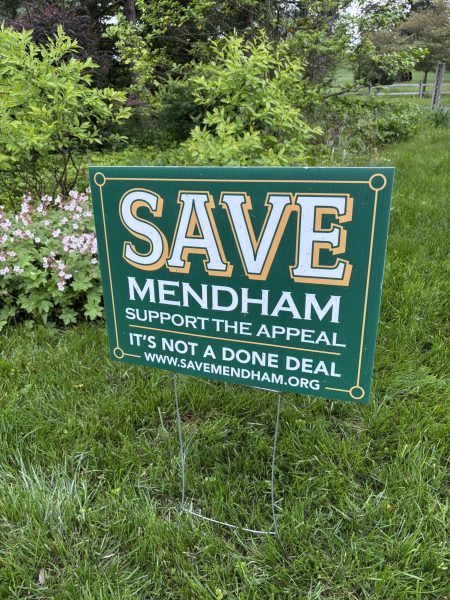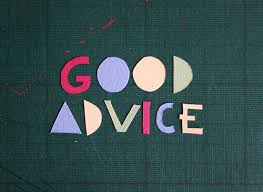Social Audio: The Next Era of Social Media
Back in 1997, the first true form of social media appeared on the internet: Six Degrees. However, up until MySpace was released, social media didn’t seem to grab the public’s attention. But once MySpace was released, it quickly became a frequent place for internet traffic. In 2004 it reached a monthly overage of a million active users (Our World in Data). At this point, the true start of social media could be marked. Social media has changed both the online world and real-life. It allows for quick and easy access to
people’s lives, has changed the way we go about relationships, creating a new source of news, and a new outlet for public speaking presentations. As time has gone on, multiple different social media platforms have filtered in and out of popularity; only a few, like Facebook, Youtube, and Reddit, have remained consistently popular since the early 2000s. Within the past few months, a new competitor has entered the world of social media: social audios.
At its root, social audios are just a big group call. There is no form of visuals, just people speaking, and people listening. While this may not appear that advanced, social audios allow for thousands of people to gather and listen in on live conversations. Essentially, social audios are like live podcasts. On a podcast with TechFirst, analyst Jeremiah Owyangwent into depth about the appeal of social audios. “What we found is during the quarantine is that text messaging just doesn’t give us the emotion and the nuance that the human condition requires, especially during isolation…Zoom calls and video shows are just too taxing on people.” Social audios have the ‘Goldilocks medium’ in regards that they give out the right amount of human socialization, without the stress of visuals on top of it. That’s where the appeal comes from; being able to have a shared communal experience with thousands, and not have to worry about appearance. Due to this enticement, many companies have been trying to utilize social audios for their benefit. In a recent report, thirty-three new social audio startups have been tracked (Forbes).
While many social media platforms are attempting to add social audio to their admins, as of now, there are only two that have begun to pick up speed. The first one would be Twitter’s form of social audio, Spaces. Twitter simply explains it as, “Spaces is a new way to have live audio conversations on Twitter.” Even though it is still being tested and tweaked, Twitter first released
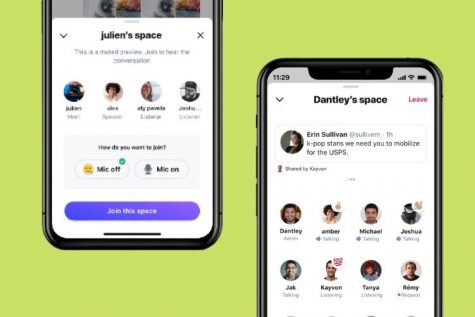
Spaces in December of 2020. Spaces is a public domain, so anyone can join as a listener. From there, the host can pick who does and cannot unmute and speak. The Spaces can be set so everyone and anyone can speak so that only those who follow you can speak, or just the people the host DM invites can speak. Something that stands Spaces out apart from the other social audio platforms is that it allows the listener to use captions if they so choose, making it user-friendly. Twitter said that they are also planning on adding a ‘tip jar’ feature into the Spaces. Other services, like Twitch, already have this feature, which allows the audience to send money into the host in support. The ‘tip jars’ will make it easier fr this translation to take place, accepting forms of payment like Bandcamp, Patreon, Venmo, and Cash App (9 to 5 Mac). Spaces is Twitter’s response to the next major platform of social audios: Clubhouse.
Like Spaces, Clubhouse is a way for mass groups of people to be listening in on a live conversation simultaneously. However, unlike Spaces, Clubhouse is an entirely new social networking platform with no ties to previous social media. The app was unveiled last year by two, former tech-industry employees, Paul Davison and Rohan Seth. A year after its launch Clubhouse already has two million users and is valued at a billion dollars (Bussiness Insider). Clubhouse has taken a much slower, softer approach to releasing the app, allowing
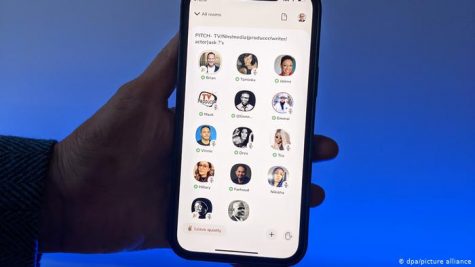
them much more time to tweet and technical issues that may arise before a grand release to the public. As of now, you have to be invited to the app by an existing member. As of now, the members mainly include notable people in Silicon Valley, like Marc Anderson and Ben Horowitz (who both were early investors of the app), entrepreneurs such as, Mark Cuban, and performers with cultural influences, notably: Tiffany Haddish, Michael Clifford, Virgil Abloh, Vanilla Ice and Drake (9 to 5 Mac). Delia Cai, a writer for Deez Links described her experience on the app as “spontaneous, low-commitment and blessedly did not involve turning any kind of camera on.”
Whether it be Clubhouse, Spaces, or an entirely new entity, social audios are bound to become increasingly popular in the coming months. Through the ability to connect people in a low-stress manner, these social audios are set for success. Will they be the next Friendster, and quickly filter out of the market, or will they live in longevity and watch other media platforms rise and fall? Unfortuemlty, that question can only be answered with time.
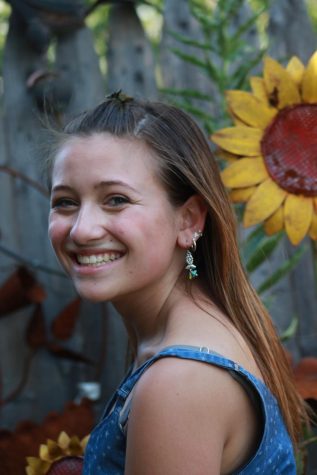
Annie Shafran is currently a Senior at West Morris Mendham High School. She is involved with Relay for Life and is a Peer Leader. This will be Annie's...



